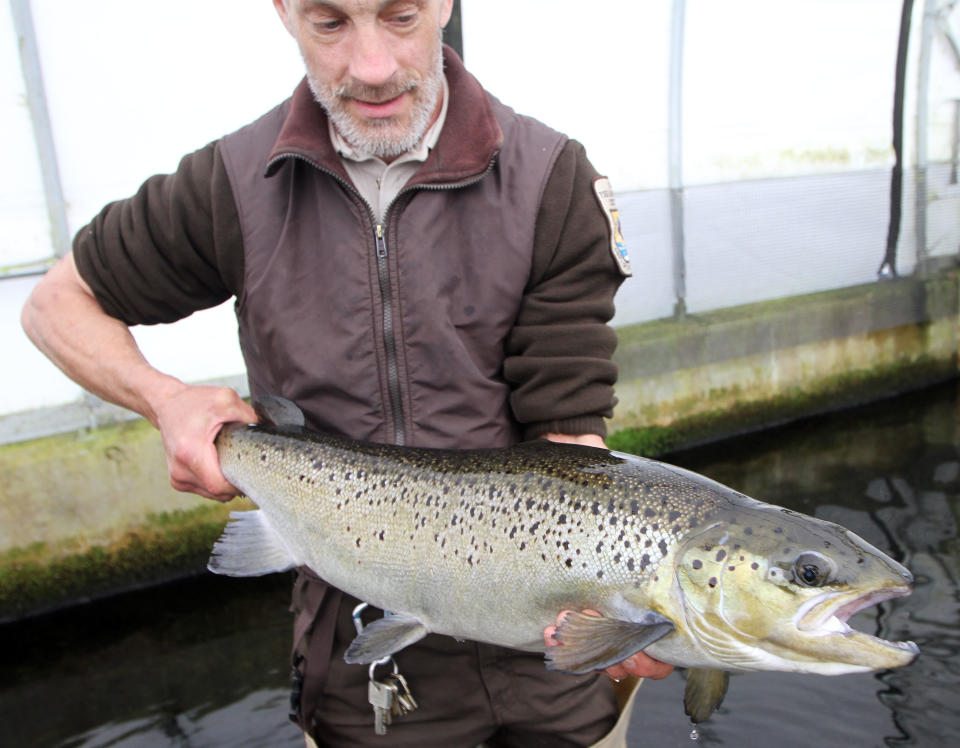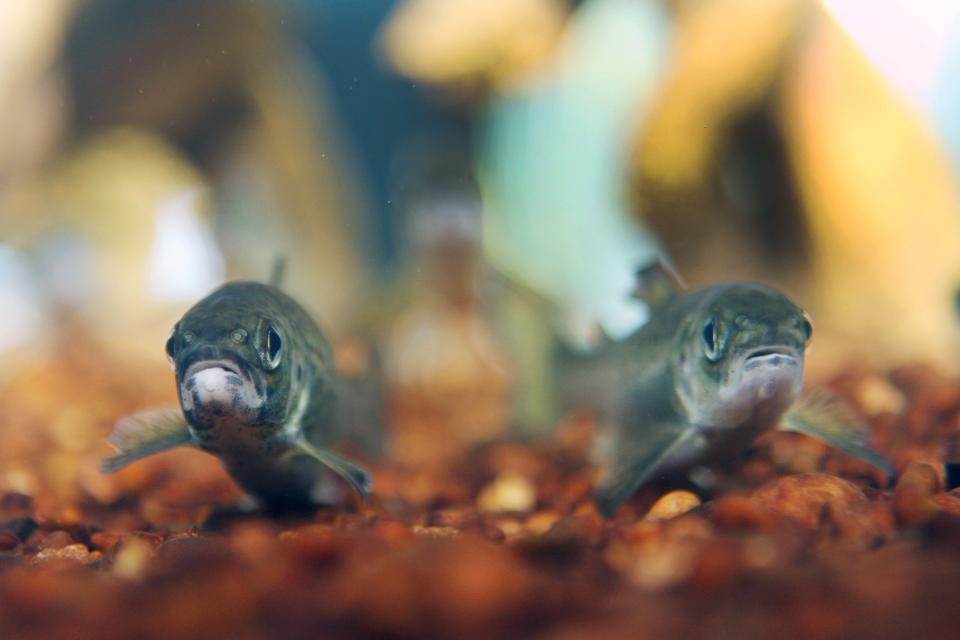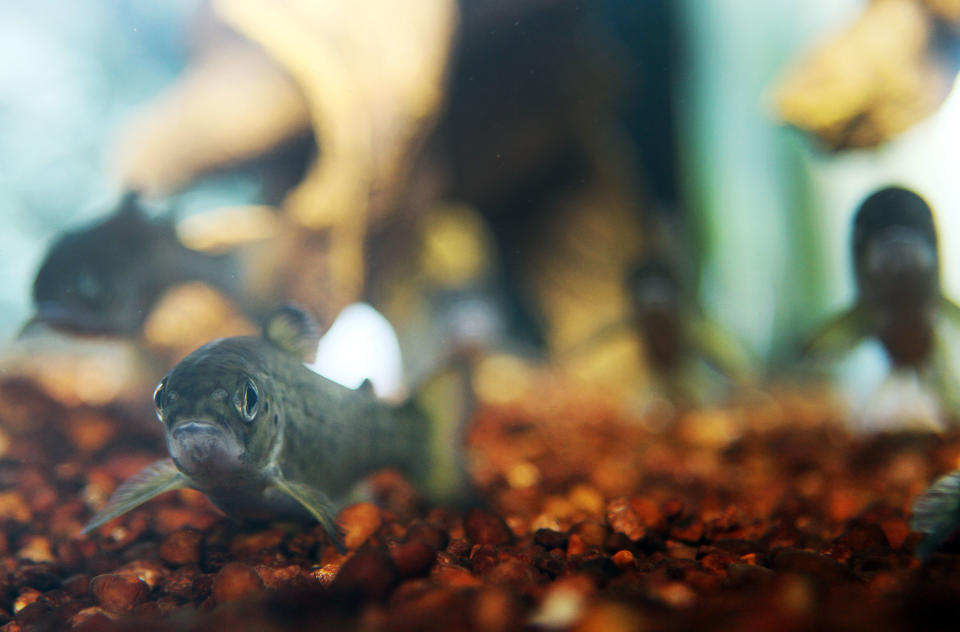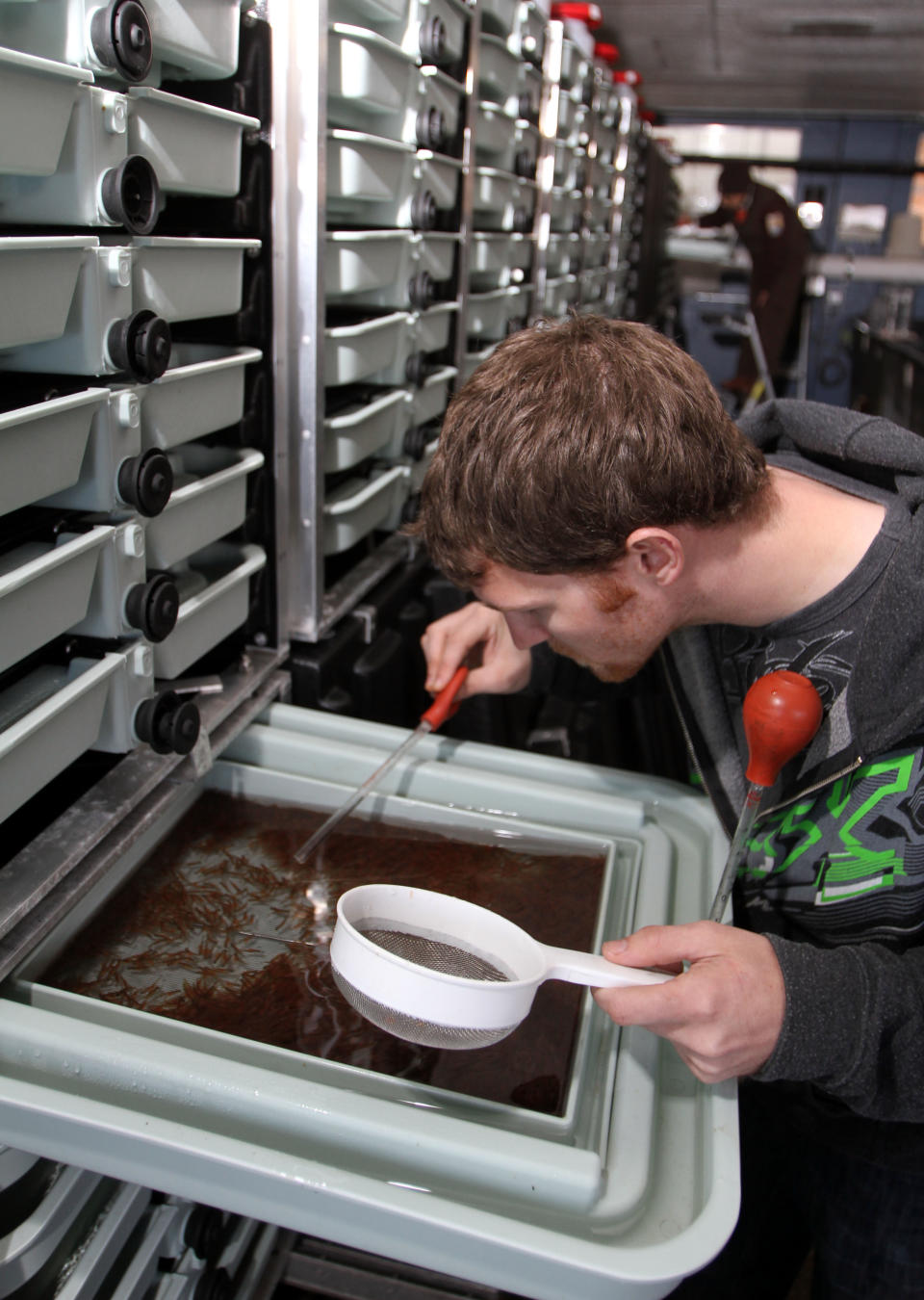NH alters salmon restoration strategy
NASHUA, N.H. (AP) — After three decades of disappointing numbers, New Hampshire is moving away from its tradition of releasing millions of baby fish into the Merrimack River watershed in hopes of restoring the state's Atlantic salmon population.
Under a federal restoration program, salmon fry have been released in the Merrimack River watershed each year since 1976 in an attempt to bring back a population that was wiped out by overfishing, pollution and dam construction in the 1800s. Using eggs from returning salmon, the National Fish Hatchery in Nashua produces millions of juvenile salmon that are stocked through the watershed each spring.
The work involves carrying the inch-long salmon fry to release points along rivers and streams, where they grow for about two years before migrating to the ocean. Ideally, the salmon return to the rivers to spawn when they are about four years old, but that hasn't often been the case.
In the program's early days, officials hoped to see thousands of fish return each year, but achieving a sustainable salmon run has remained elusive, with an average of 121 adult salmon returning to the river each year. Until 2011, when a record 402 returning salmon were counted at a fish lift downstream in Massachusetts, the project met its annual target of 300 fish just once, in 1991.
The program's shift in strategy is motivated largely by its lack of success, said Matt Carpenter, a fisheries biologist who coordinates New Hampshire's salmon restoration program.
"We're spending a lot of time on this program, and the time spent was out of proportion with results we were getting," he said. "We saw it more of sort of a hail Mary pass. We want to keep the potential for salmon restoration there, but maybe not invest so much time."
Details are still being worked out, but the new strategy means scaling back hatchery production and shifting the focus to analyzing the potential for natural salmon reproduction in the watershed, particularly in the Souhegan River, where a recent dam removal has made spawning habitat accessible for the first time in the program's history.
"We really wanted to know whether fish could spawn in the river now," Carpenter said. "The basic philosophy is that we want to really monitor the potential for natural reproduction. So what can we expect from these rivers if we let fish just spawn naturally, do their own thing, instead of relying mostly on hatchery numbers to increase our number of returns."
Some of the changes already are under way. Last fall, the Nashua hatchery took about 40,000 smolts — salmon ready to migrate to the ocean — raised at a hatchery in Maine, clipped one of their small fins and put radio tags on them before releasing them in the Souhegan River. Those fish are being monitored to study where and how well they are able to spawn, said Kyle Flanery, who manages the hatchery for the U.S. Fish and Wildlife Service.
"What we want to do is eventually get to the point where maybe we don't handle the fish at all," he said.
"What we learn from this, hopefully we'll use on a different river system and have some success with the salmon program."
In northern and western New Hampshire, there will be a significant reduction in fry stocking for the separate Connecticut River Salmon Program due to flood damage at the White River Hatchery in Vermont during Tropical Storm Irene. Most of the fry for that program will be stocked in Massachusetts and Connecticut, with a small number stocked in the Keene area.
Both restoration programs have been limited by poor survival rates of salmon in the ocean, Carpenter said, and the new strategy for the Merrimack River program acknowledges that.
"We don't have much control over the outcome because a lot of the issues are going on in the ocean," he said.
Carpenter said he wasn't sure why the stocking strategy wasn't altered earlier, given the disappointing results. But in the program's early years, the ratio of returning fish to stocked fish was higher, he said.
"People were very optimistic," he said. "They were heavily invested in this thing and they saw it start to work, and then inexplicably, things went the other way. ... They felt like, if we just hang on, maybe it's just a bad cycle, a downturn. Maybe they were right."




